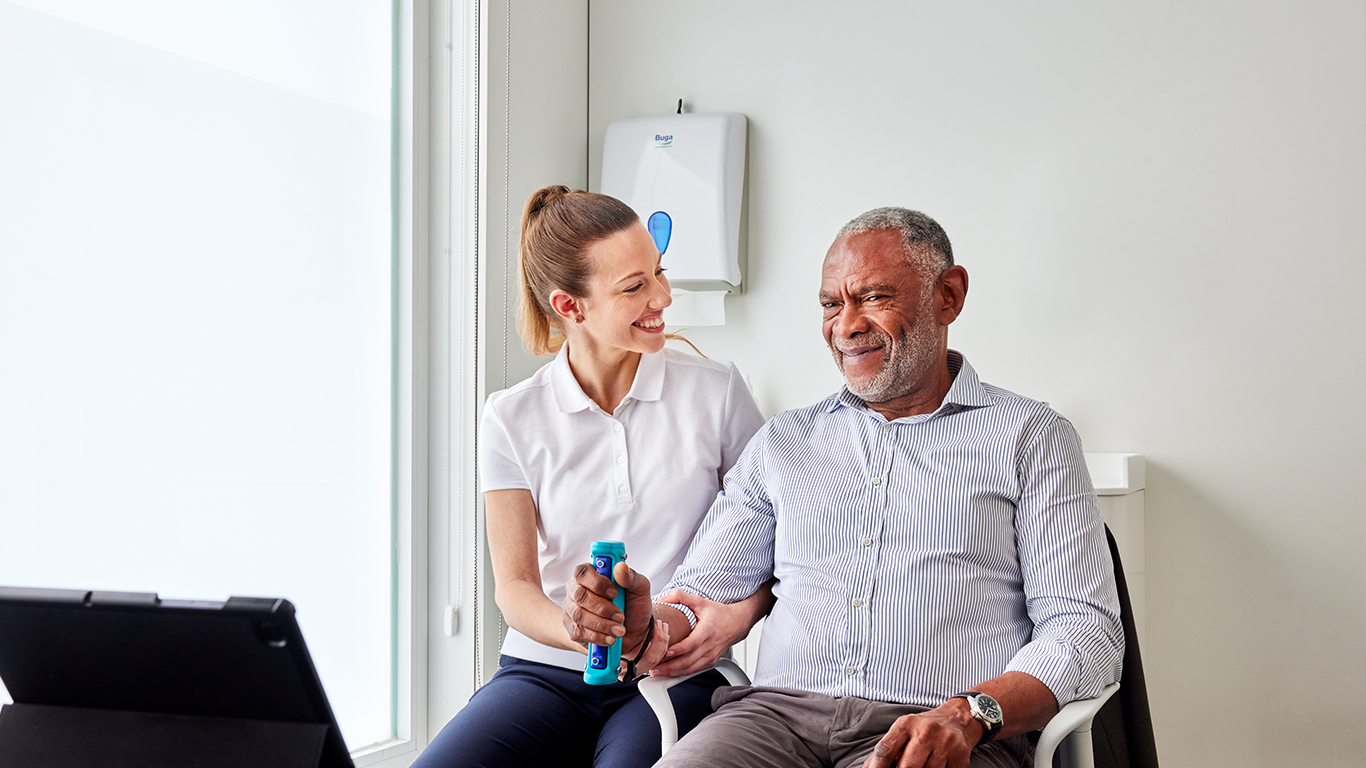Voyage of discovery after a life-changing injury: Lionel’s story
Marine engineer Lionel led an active lifestyle – when he wasn’t travelling around the world for work and assisting with transatlantic sailing, he could be found sailing the waters in his leisure time, maintaining his houseboat home, or playing the violin. But sadly, this all changed when he sustained a traumatic, life-changing injury to his left hand in a sailing accident.
Following a long journey of extensive surgery and post-surgical complications, Lionel was ready to begin his rehabilitation and see improvements. With no range of movement in his wrist, and limited thumb and finger flexion and extension, Lionel sought the support of GripAble to help rebuild his strength and hand and arm function.
This article describes Lionel’s journey to get back to doing the things he loves and how he used GripAble to maintain his motivation and positive attitude.
Lionel was a passionate sailor in his leisure time as well as at work, in addition to being an accomplished violinist. So, when he sustained a life-changing injury to his (non-dominant) left hand, his life was – understandably – turned upside down. His hand became trapped by a winching system on the boat he was sailing, leading to a subtotal amputation.
After his accident, Lionel was airlifted from his boat and flown to a major trauma centre in London for evaluation. He was then transferred to the regional unit for hand replantation after being confirmed as medically stable.
His surgery involved a distal row carpectomy (surgical removal of the carpal bone) and various fusions and fixations, as well as repair to all his flexor/extensor tendons, nerves, and soft tissues. The base of Lionel’s fifth metacarpal bone in his hand was significantly damaged and had to be removed.
Lionel was referred to psychological services to address his trauma, but he maintained his positive attitude and was optimistic about his rehabilitation. The Patient Specific Functional Scale (PSFS) was used to identify his long-term goals which included returning to work, playing the violin, and engaging with sailing again.
Experiencing complications
Lionel was discharged home on day eight but continued to receive weekly X-rays and wound, splint and range of movement checks. At 21 days, he was able to make a mid-fist and achieve near full extension at the metacarpophalangeal joints (MCPs). He had near full thumb extension and flexion, and range of movement in his wrist was considered very good.
However, after 26 days, Lionel began to experience significant pain and swelling and reduced range of movement and was immediately admitted to hospital for post-op infection complications. His metal work was removed, and he commenced IV antibiotics. Lionel remained an in-patient for ten days and during this time, his fractures were considered unstable, and no active range of movement was allowed due to the infection and fluid build-up.
Once he was discharged, Lionel attended hand therapy twice a week to address the fluid build-up and global elbow and shoulder stiffness which developed secondary to his immobilisation.
Putting the work in with GripAble
Lionel’s occupational therapist introduced him to GripAble at 16 weeks once his fractures were considered stable and his infection had resolved. At this stage, Lionel had no range of movement in his wrist, very limited thumb range of movement, and very limited digit flexion or extension.
GripAble was introduced as an adjunct to other treatments that were addressing his elbow and shoulder stiffness including pulleys, foam roller stretches and the use of a gym ball. Self-motivated to see improvements, Lionel purchased all the equipment so he could use it at home daily.
To improve his cognitive pathways and help reduce his ongoing neuropathic pain, Lionel was advised to play games on GripAble with his right hand and use a mirror for mirror therapy training.
With the use of the silicone straps, Lionel played grip and release-based games using GripAble. Lionel said these were his favourite games, so he had no problem with staying motivated to play them! He also self-monitored his range of movement and pain levels on a day-to-day basis.
Other GripAble games were recommended to help Lionel with wrist extension and flexion, which remained extremely stiff due to fibrosed scar tissues adhering to his tendon gliding.
New horizons
At 10 months post-injury, Lionel sought specialist support to help him get back to playing the violin. He returned to his role as a marine engineer in a consultancy role, and even provided sailing tuition for a charity taking disadvantaged children on boat trips.
Lionel continues to use GripAble daily to maintain his grip/release; pronation/supination and wrist extension/flexion. He said:
“I have come to terms with my injury now, and realise I can only maintain what I have – but I take GripAble with me wherever I go and use it daily. I am back to sailing even if I cannot actually sail a boat.”
Affordable remote rehab
GripAble is a mobile assessment and training platform which includes bespoke hand-held sensors, mobile hardware, software, in-built gamification and data services, to enable home-based rehabilitation for patients with a wide range of neurological and
musculoskeletal conditions including upper limb spasticity. GripAble’s unique handgrip sensor connects to a mobile app, allowing users to partake in specifically designed activities selected by their therapist, to train core hand and arm movements.

